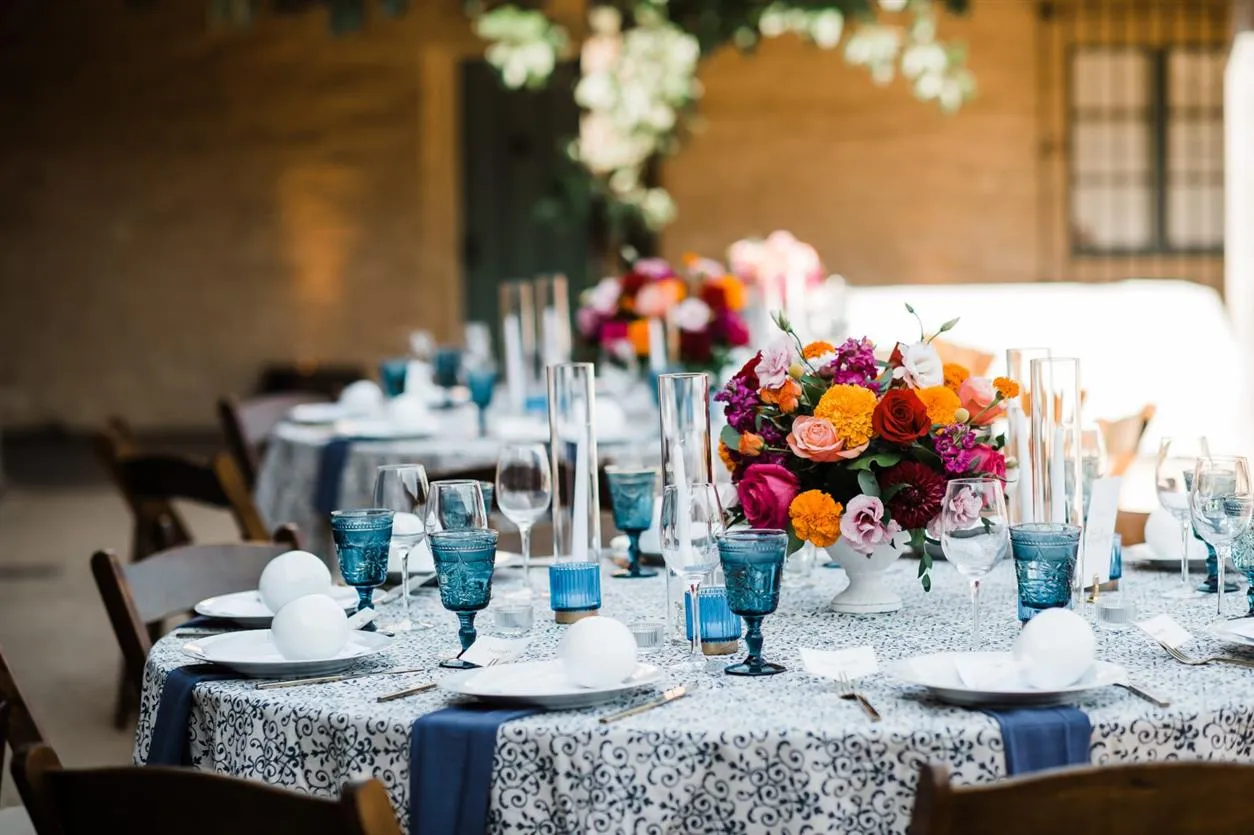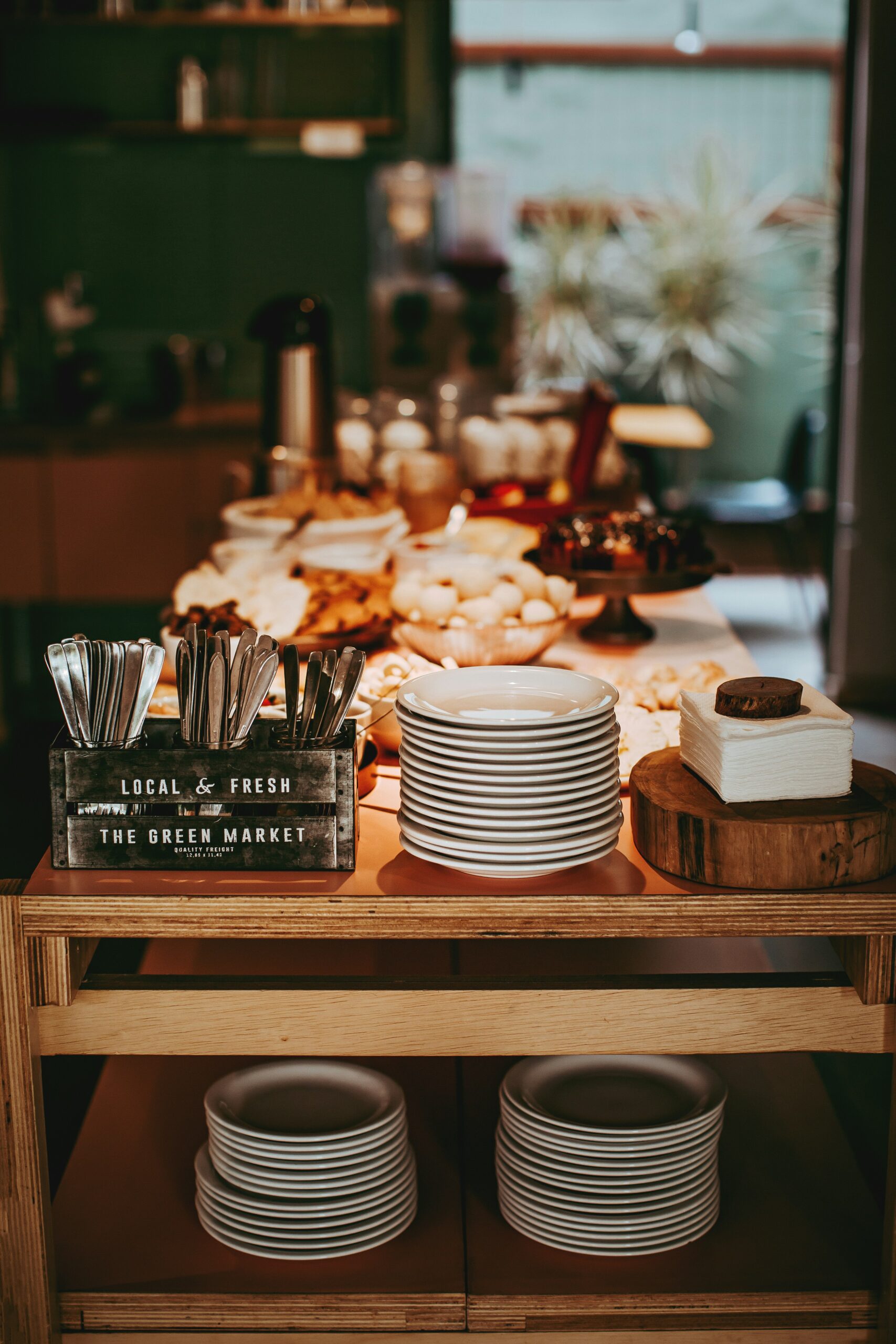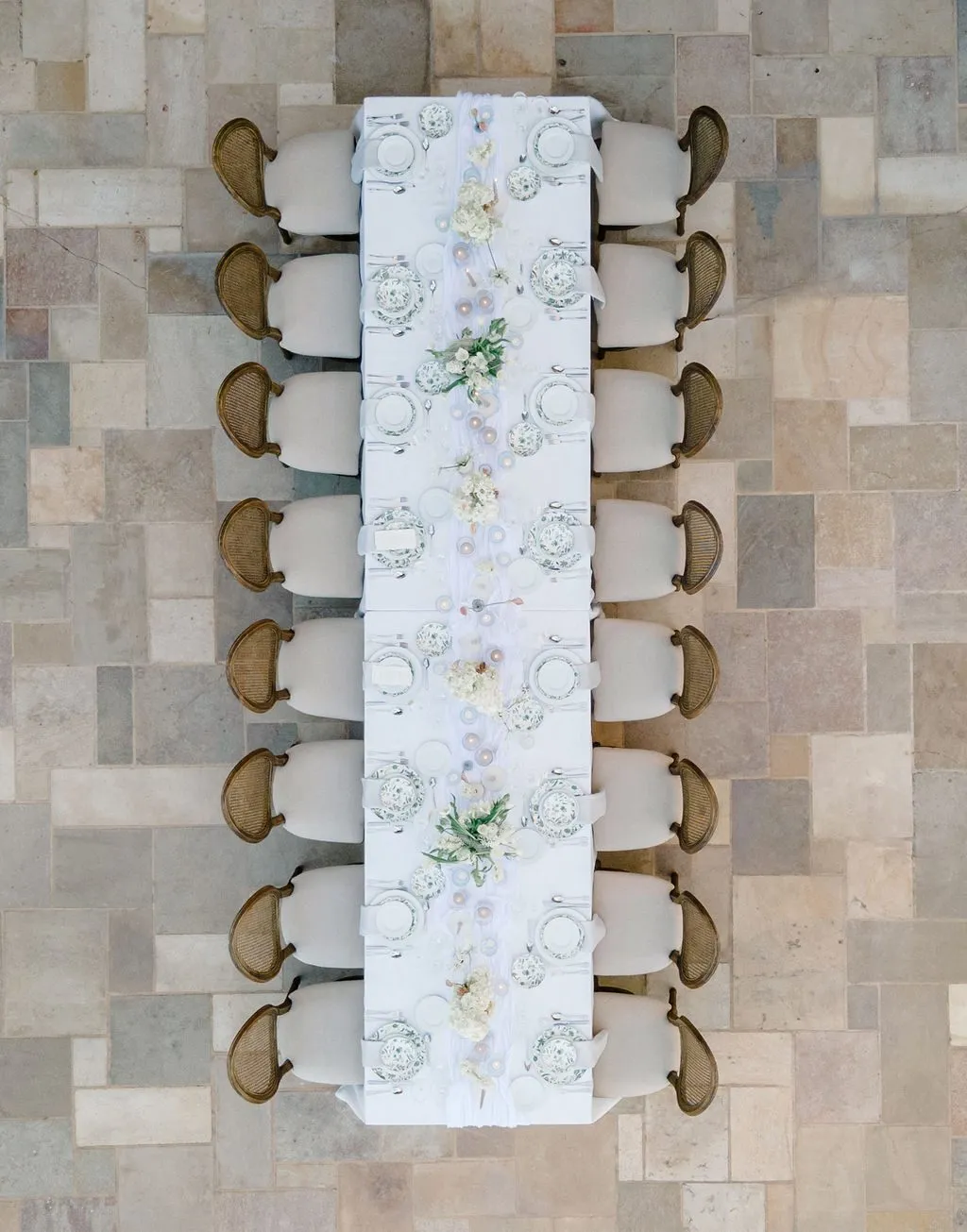Key Takeaways
- Accurate guest count assessment is crucial for determining tableware quantities for any event
- Different event types require varying tableware quantities, from formal dinners to casual gatherings
- The menu and service style play a crucial role in determining tableware quantities
- Budget considerations are crucial when calculating tableware quantities for an event
- Event planners can leverage various tools and resources to accurately calculate tableware quantities
How to Calculate Tableware Quantities for Your Event

Calculating tableware quantities for events involves assessing guest list size, understanding event types, identifying menu and service style, and considering budget constraints. This process ensures the right number of glasses, spoons, and soup bowls are available. By following these steps, event planners can avoid shortages and make informed decisions about tableware rentals, bringing innovation to their kitchen planning.
Assessing Your Guest List Size
Accurate guest count assessment is crucial for determining tableware quantities for any event, whether it’s a cocktail party or a wedding. Event planners should encourage timely RSVPs and factor in potential last-minute changes to ensure adequate supplies without overspending. Considering the event type and price per guest can help refine tableware estimates, allowing for a seamless dining experience without unnecessary rental costs.
Understanding Different Event Types
Different event types require varying tableware quantities. Formal dinners typically need more equipment, including stainless steel cutlery and water glasses for each course. Casual gatherings may use fewer pieces, focusing on essential items like plates and drink cups. Event planners must consider the specific needs of each occasion to ensure adequate supplies without overspending. Here’s a breakdown of common event types and their tableware requirements:
- Formal dinner: Full place settings, multiple courses
- Cocktail party: Appetizer plates, drink glasses
- Buffet: Fewer utensils, more serving equipment
- Outdoor picnic: Disposable or durable outdoor-friendly tableware
- Wedding reception: Elegant place settings, champagne flutes
Identifying the Menu and Service Style
The menu and service style are crucial in determining tableware quantities for events. For a formal dinner with multiple courses, event planners must account for various utensils, including steel cutlery for each protein dish. In contrast, a cocktail party may require fewer pieces, focusing on small plates and glasses. The service style, whether buffet or plated, also impacts tableware needs. By carefully considering these factors, planners can accurately estimate attendance levels and ensure the right amount of tableware is available for each guest.
Taking Your Budget Into Account
Budget considerations are crucial when calculating tableware quantities for an event. Event planners must balance the desired menu and guest list size with available funds. They can explore cost-effective options such as renting tableware, using disposable items for certain courses, or even considering food truck catering for a more casual atmosphere. By carefully planning the menu and service style, organizers can ensure they have enough plates for salads and main courses without overspending. Here’s a breakdown of tableware costs based on event size:
| Event Size | Estimated Tableware Cost | Cost-Saving Tips |
|---|---|---|
| Small (25-50 guests) | $200-$500 | Use rental services, mix disposable and reusable items |
| Medium (50-100 guests) | $500-$1000 | Opt for buffet-style service, simplify menu |
| Large (100+ guests) | $1000+ | Consider food truck catering, bulk rental discounts |
Determining Plate Quantities for Various Event Sizes
Determining plate quantities for events of various sizes requires careful planning. For small gatherings, consider the menu, including wine pairings and finger foods, to estimate plate needs. Medium to large events demand a more comprehensive approach, factoring in multiple courses, cutlery requirements, and the potential need for additional items like rice bowls or plastic plates for outdoor settings.
Calculating for Small Gatherings
Small gatherings require careful consideration when calculating plate quantities. Event planners should account for the number of guests, menu items, and potential dietary restrictions. For budget-conscious events, disposable tableware can be a cost-effective option, especially for outdoor settings where heat may be a concern. However, durable plates are preferable for more formal occasions like wedding receptions. By accurately estimating plate needs, hosts can ensure a smooth dining experience without excess waste or shortages.
Planning for Medium to Large Events
For medium to large events, food service professionals employ a rule of thumb to determine plate quantities. They use data from past events to estimate the required stock of tableware. This approach ensures sufficient plates for each course while avoiding excessive inventory. Here’s a breakdown of plate quantities for different event sizes:
| Event Size | Dinner Plates | Salad Plates | Dessert Plates |
|---|---|---|---|
| 50-100 guests | 110-220 | 55-110 | 55-110 |
| 100-200 guests | 220-440 | 110-220 | 110-220 |
| 200-500 guests | 440-1100 | 220-550 | 220-550 |
Adjusting Tableware Numbers for Buffet-Style Services

Buffet-style services require adjustments to tableware quantities. Event planners should consider increasing the number of plates and forks by 10-15% to account for guests who may want to taste multiple dishes. This ensures a smooth serving experience without running out of clean tableware.
The quantity of serving utensils also needs careful consideration. Planners should provide multiple serving spoons and tongs for each dish to prevent lines from getting blocked. This allows guests to serve themselves efficiently, maintaining a steady flow at the buffet table.
It’s wise to have extra plates and utensils for buffet setups on standby. These can quickly replace any dropped or soiled items, ensuring the buffet line continues to move smoothly. By anticipating these needs, event organizers can create a seamless dining experience for all guests.
Special Considerations for Formal Events
Formal events require meticulous tableware planning to ensure a flawless dining experience. Event management professionals must differentiate between courses, calculating precise quantities for each dish. They also need to include appropriate glassware and flatware in their count, considering the meal structure and potential risks. This careful approach minimizes the need for paper products and maintains the event’s elegant atmosphere.
Differentiating Between Courses
Formal events require careful planning for each course to ensure the right tableware is available. Event planners must calculate the number of plates, utensils, and glasses needed for each part of the meal. This approach helps avoid shortages and maintains an elegant atmosphere throughout the event. Here’s a breakdown of tableware requirements for a typical four-course formal dinner:
| Course | Plates | Utensils | Glassware |
|---|---|---|---|
| Appetizer | Small plate | Salad fork, knife | Water glass |
| Soup | Bowl | Soup spoon | – |
| Main Course | Dinner plate | Dinner fork, knife | Wine glass |
| Dessert | Dessert plate | Dessert fork, spoon | Champagne flute |
Including Glassware and Flatware in Your Count
Accurate glassware and flatware counts are crucial for formal events. Event planners should calculate one set of utensils per guest for each course, plus extras for replacements. For glassware, consider water glasses, wine glasses, and champagne flutes based on the beverage service. Here’s a recommended glassware and flatware count for a formal dinner:
| Item | Quantity per Guest | Extra for Replacements |
|---|---|---|
| Dinner Fork | 1 | 10% |
| Salad Fork | 1 | 10% |
| Dinner Knife | 1 | 10% |
| Dessert Spoon | 1 | 10% |
| Water Glass | 1 | 15% |
| Wine Glass | 2 | 15% |
| Champagne Flute | 1 | 15% |
Tips for Accurate Tableware Quantity Calculation

Accurate tableware quantity calculation is essential for successful event planning. Event planners can utilize specialized tools and resources to streamline the process and ensure precise estimates. Additionally, seeking professional advice or consulting can provide valuable insights and help avoid common pitfalls in tableware planning.
Utilizing Event Planning Tools and Resources
Event planners can leverage various tools and resources to accurately calculate tableware quantities. Online calculators and spreadsheet templates offer efficient ways to input guest numbers and menu details, automatically generating tableware estimates. These tools often include customizable options for different event types and service styles. Here’s a comparison of popular event-planning tools:
| Tool | Features | Best For |
|---|---|---|
| AllSeated | 3D floor plans, guest list management | Large-scale events |
| Planning Pod | Budgeting, task management | Multi-day conferences |
| Cvent | Registration, venue sourcing | Corporate events |
| Social Tables | Seating arrangements, check-in | Weddings, galas |
Seeking Professional Advice or Consulting
Event planners can benefit from seeking professional advice or consulting services to ensure accurate tableware quantity calculations. Experienced consultants bring industry knowledge and insights that can help refine estimates, account for unforeseen circumstances, and optimize tableware selections. They can provide guidance on the latest trends, cost-effective solutions, and best practices for different event types. By leveraging professional expertise, event organizers can avoid common pitfalls, streamline their planning process, and ensure a seamless dining experience for their guests.
Frequently Asked Questions Regarding Tableware Quantities

Event planners often face common questions when determining tableware quantities. This section addresses key concerns, including calculating for wedding receptions, managing late RSVPs, and understanding standard ratios for different tableware types. These insights help ensure accurate estimates and smooth event execution, even when faced with last-minute changes or unique event requirements.
How Should I Calculate for a Wedding Reception?
Wedding receptions require careful tableware calculation due to their formal nature and varying guest counts. Event planners should estimate one complete place setting per confirmed guest, plus an additional 10-15% for unexpected attendees or replacements. This includes dinner plates, salad plates, dessert plates, multiple utensils, and various glasses for water, wine, and champagne. For a typical 100-guest wedding reception, planners should prepare the following tableware quantities:
| Item | Quantity | Extra (15%) | Total |
|---|---|---|---|
| Dinner Plates | 100 | 15 | 115 |
| Salad Plates | 100 | 15 | 115 |
| Dessert Plates | 100 | 15 | 115 |
| Forks (Dinner, Salad, Dessert) | 300 | 45 | 345 |
| Knives | 100 | 15 | 115 |
| Water Glasses | 100 | 15 | 115 |
| Wine Glasses | 200 | 30 | 230 |
| Champagne Flutes | 100 | 15 | 115 |
What if Guests RSVP Late or Not at All?
Event planners should prepare for late or missing RSVPs by implementing a buffer in their tableware calculations. They can add an extra 10-15% to their initial estimates based on confirmed guests. This approach ensures sufficient tableware for unexpected attendees while minimizing waste. Planners should also set clear RSVP deadlines and follow up with non-responders to refine their estimates. Here’s a breakdown of recommended buffer quantities:
| Guest Count | Buffer Percentage | Extra Place Settings |
|---|---|---|
| 50-100 | 15% | 8-15 |
| 100-200 | 12% | 12-24 |
| 200+ | 10% | 20+ |
Are There Standard Ratios for Different Types of Tableware?
Standard ratios for different types of tableware help event planners estimate quantities accurately. For most events, planners should provide one dinner plate, one salad plate, and one dessert plate per guest. Utensil ratios typically include one dinner fork, one salad fork, one knife, and one spoon per person. Glassware ratios vary depending on the event type and beverage service, but generally include one water glass and one or two wine glasses per guest. These standard ratios serve as a starting point for calculations, which can be adjusted based on specific event requirements:
- Plates: 1 dinner, 1 salad, 1 dessert per guest
- Utensils: 1 dinner fork, 1 salad fork, 1 knife, 1 spoon per guest
- Glassware: 1 water glass, 1-2 wine glasses per guest
- Buffet events: Add 10-15% extra plates and utensils
- Formal events: Include additional specialty utensils and glassware
Conclusion
Accurate tableware quantity calculation is crucial for successful event planning, ensuring guests have the necessary plates, utensils, and glassware while minimizing waste and costs. By carefully assessing guest list size, understanding event types, and considering menu and service style, event planners can make informed decisions about tableware needs. Utilizing event planning tools and seeking professional advice can further refine estimates and account for unforeseen circumstances. Ultimately, mastering the art of tableware quantity determination leads to smoother events, satisfied guests, and more efficient resource management.






